Physical Address
304 North Cardinal St.
Dorchester Center, MA 02124
![]() For video accompanying this chapter see ExpertConsult.com. See inside cover for access details.
For video accompanying this chapter see ExpertConsult.com. See inside cover for access details.
Although rare, several conjunctival tumors can occur in the pediatric population. These tumors range from benign lesions, including the most common, conjunctival nevi, to malignant lesions such as melanoma or Kaposi sarcoma. Fortunately, most pediatric conjunctival tumors are benign. However, even benign lesions can lead to ocular morbidity and loss of vision; therefore, an understanding of the clinical appearance, diagnosis, and treatment is necessary.
Compared to publications on conjunctival tumors in adults, the number of articles regarding conjunctival tumors in children is quite small. There are only three published large series on conjunctival tumors in children, two of which are from a histopathological perspective. The only large clinical series of this entity was published in 2007 by Drs Jerry and Carol Shields and included 262 children.
The conjunctiva is a translucent, vascularized mucous membrane that is freely mobile over the globe and in the fornix, but firmly adherent to the posterior eyelid surface at the tarsal plate. It is composed of: (1) epithelium, which contains goblet cells and melanocytes; and (2) stroma, a fibrovascular connective tissue, which contains collagenous and elastic tissue as well as lymphocytes, plasma cells, vessels, mast cells, and accessory lacrimal glands.
When examining the conjunctiva, a slit-lamp examination is helpful. In addition to the easily viewed bulbar conjunctiva, it is important to evaluate the fornices and, if possible, to evert the upper lid to check for extension of a lesion or a second tumor. If a malignancy is suspected, palpate the preauricular and submandibular lymph nodes for enlargement. When describing the lesion, note the location (bulbar, palpebral, fornix, or caruncle), size including thickness, consistency of the surface (smooth, rough with keratin, granular, gelatinous, or papillary), mobility over underlying sclera (freely mobile or firmly adherent), shape (flat, nodular, or pedunculated), and composition (cystic or solid).
Pediatric conjunctival tumors are typically classified as congenital (including choristomas and hamartomas), epithelial, or stromal tumors. Epithelial tumors are further grouped into non-melanocytic and melanocytic subtypes. Non-melanocytic tumors include benign entities (squamous papilloma, keratoacanthoma, oncocytoma, and dacryoadenoma) as well as premalignant and malignant entities (actinic keratosis, conjunctival intraepithelial neoplasia, and squamous cell carcinoma). Melanocytic tumors are also comprised of benign lesions (nevus) and malignant lesions (melanoma). Stromal lesions may be vascular, fibrous, xanthomatous, neural, myxoid, leukemic, or lymphoproliferative. It is also important to be aware of non-neoplastic conditions simulating tumors including epithelial inclusion cysts, inflammatory lesions, foreign bodies, and granulomas ( Table 30.1 ).
| Classification | Subtypes |
|---|---|
| Epithelial | Melanocytic; non-melanocytic |
| Stromal |
|
| Congenital | |
| Simulating lesions |
Hamartomas are congenital overgrowths of normal tissue at their naturally occurring site. The most common are hemangiomas including infantile periocular (capillary) and cavernous. Infantile hemangioma is the more common and occurs as an isolated conjunctival lesion or may be continuous with an orbital or lid lesion (see Chapter 20 ). They appear as soft, red, vascular nodules shortly after birth and may grow for the first year and then involute years later ( Fig. 30.1 ). Most of these isolated conjunctival capillary hemangiomas do not need treatment. However, they often involute more rapidly if treated with topical timolol. Cavernous hemangiomas are typically larger and appear as multiloculated vascular masses. Because these do not regress spontaneously and may cause recurrent spontaneous subconjunctival hemorrhages, excision is the best treatment.
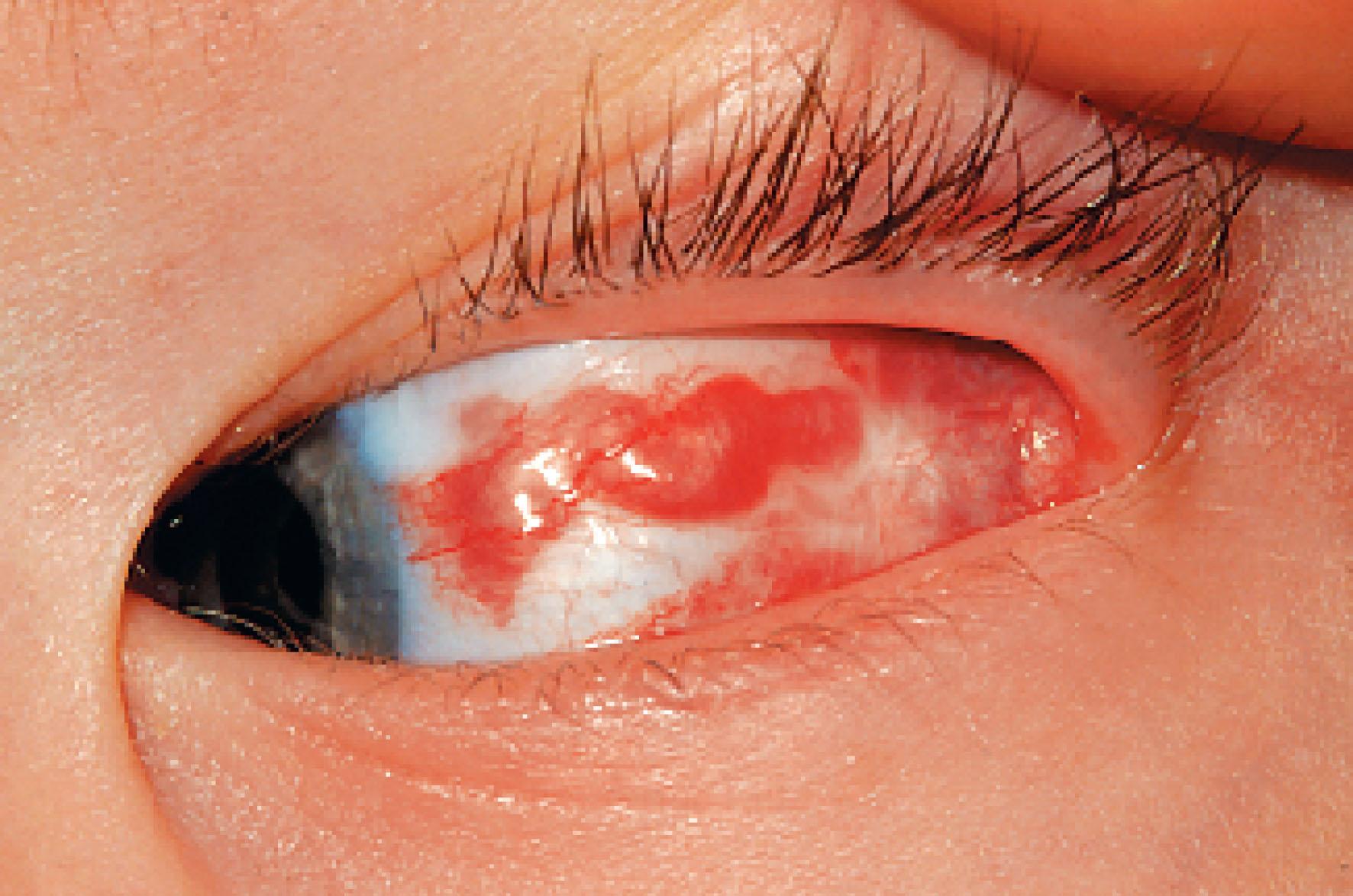
Choristomas are congenital tumors consisting of displaced tissue elements in an abnormal location. The most common conjunctival choristomas are dermoids and lipodermoids. Conjunctival dermoids are congenital, well-circumscribed, firm yellow-white solid masses with a predilection for the limbus. The surface can be smooth or coarse, with keratin and even hair formation ( Fig. 30.2 ). They may appear in isolation or as part of Goldenhar syndrome, which is also known as oculoauriculovertebral dysplasia, in which structures derived from the first branchial arch are affected resulting in preauricular appendages, deafness, and vertebral anomalies. Dermoids may be simply observed if asymptomatic, or excised if causing disfigurement or significant astigmatism. Lipodermoids (dermolipomas) are soft, mobile, yellow-colored lesions arising at the lateral canthal region and are typically observed ( Fig. 30.3 ).
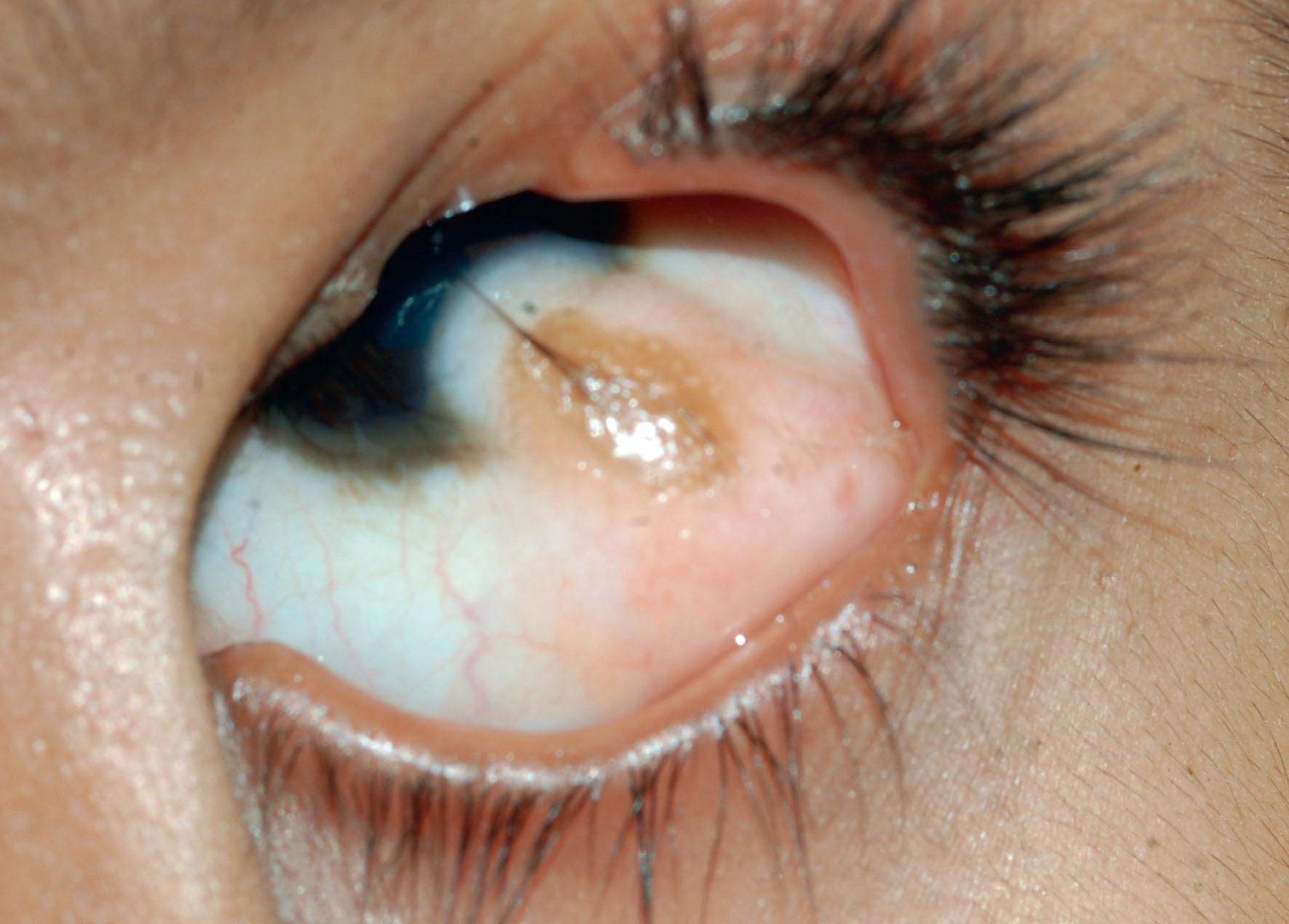
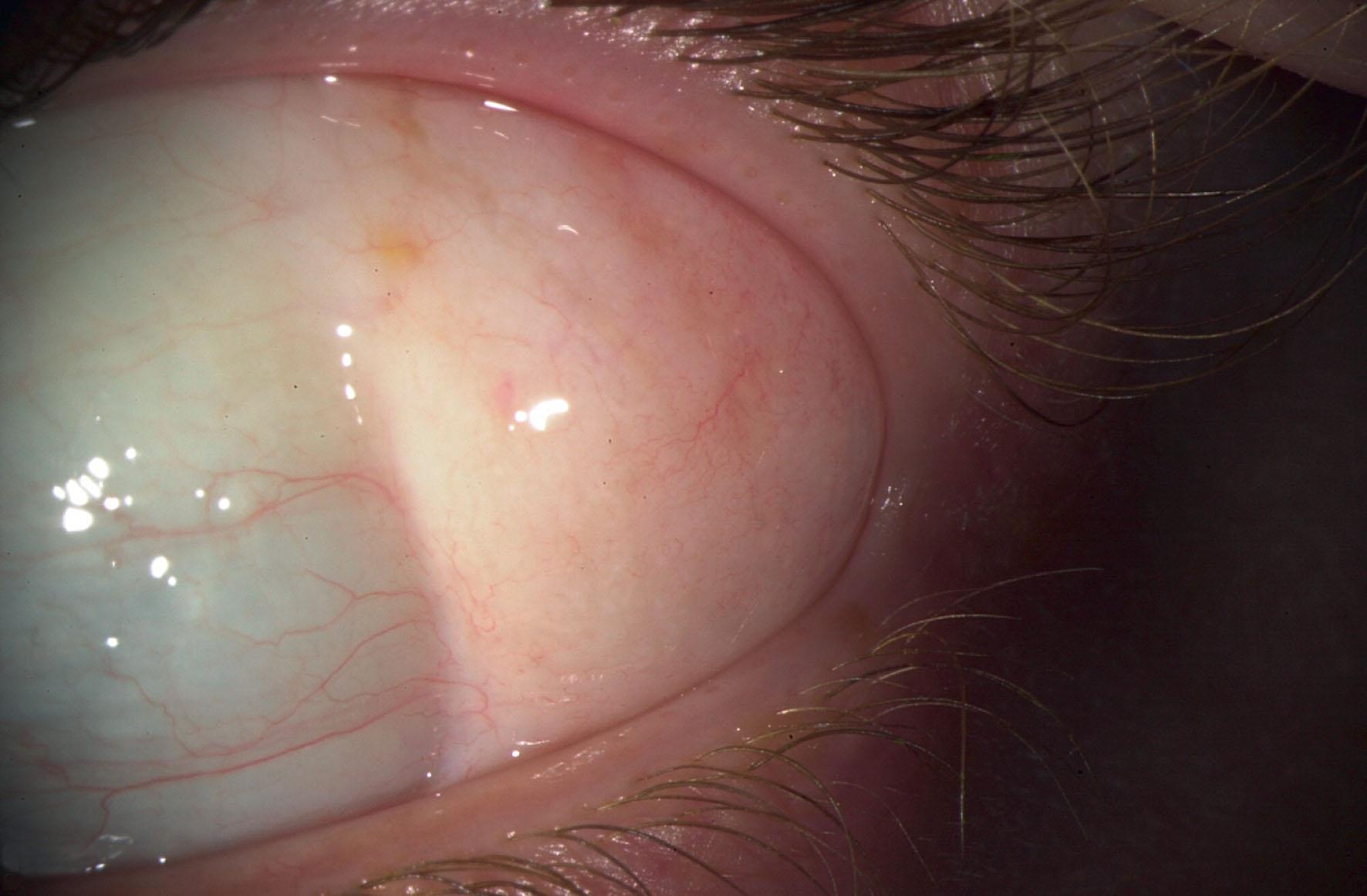
Squamous papillomas are benign tumors that appear as pink vascular fronds of tissue arranged in a sessile or pedunculated configuration, often with corkscrew vessels ( Fig. 30.4 ). In children, papillomas have been documented to be associated with human papilloma virus (HPV; mostly subtypes 6, 11, and 16). They are often located in the inferior fornix or bulbar conjunctiva. They are typically solitary, but can be bilateral and multiple. Small lesions may be observed for spontaneous resolution, but larger tumors require excision with a no-touch technique in order to prevent the spread of the papilloma-related virus. Cryotherapy should be applied in a double freeze–thaw fashion to the surrounding conjunctival edges and the base of the tumor in order to reduce the risk of recurrence. Conjunctival papillomas tend to recur and, for these cases, topical or subconjunctival interferon alpha-2b may be used to prevent recurrence ( Fig. 30.5 ). Other treatment options include mitomycin C, oral cimetidine, and carbon dioxide laser vaporation.
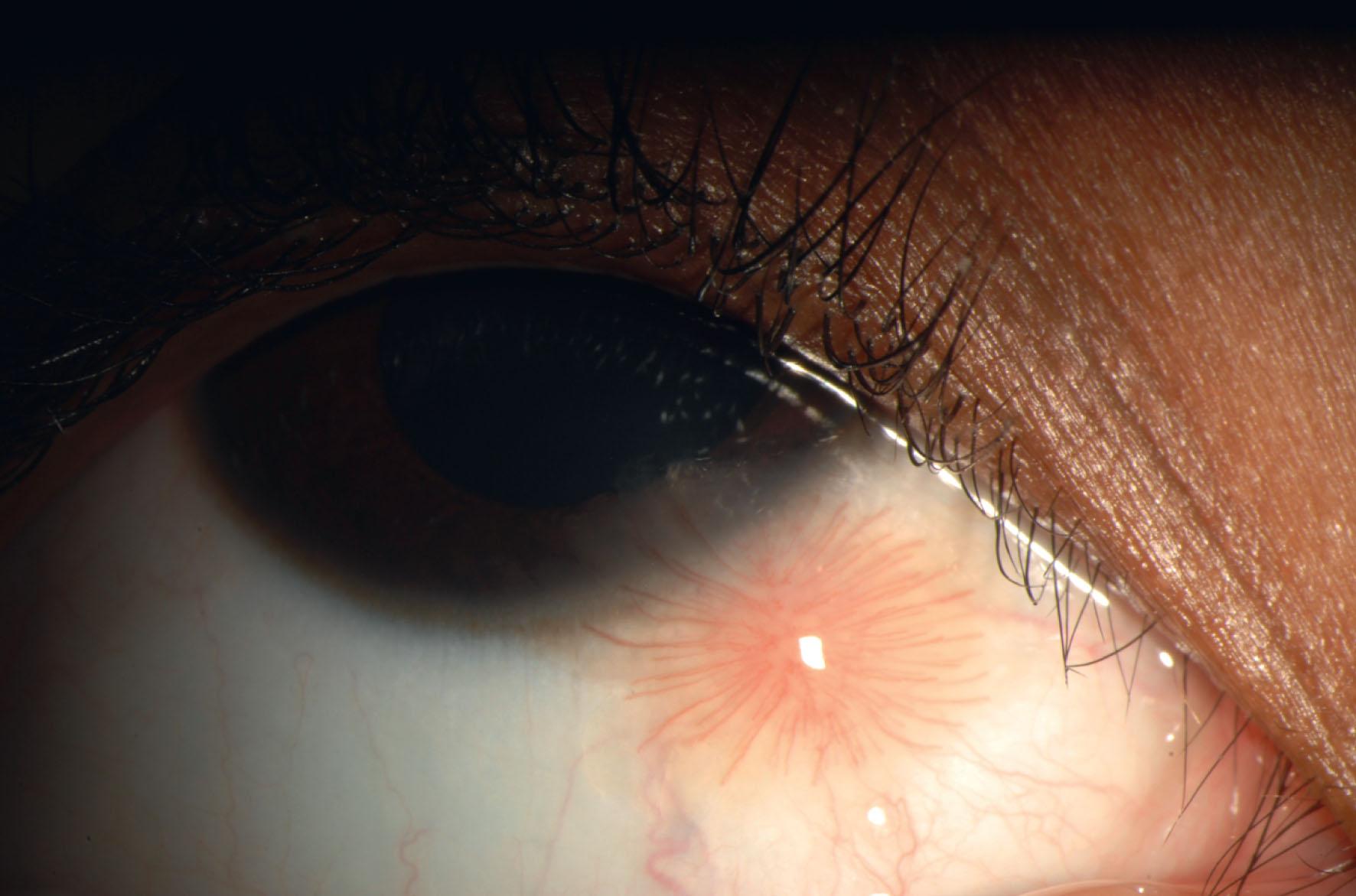
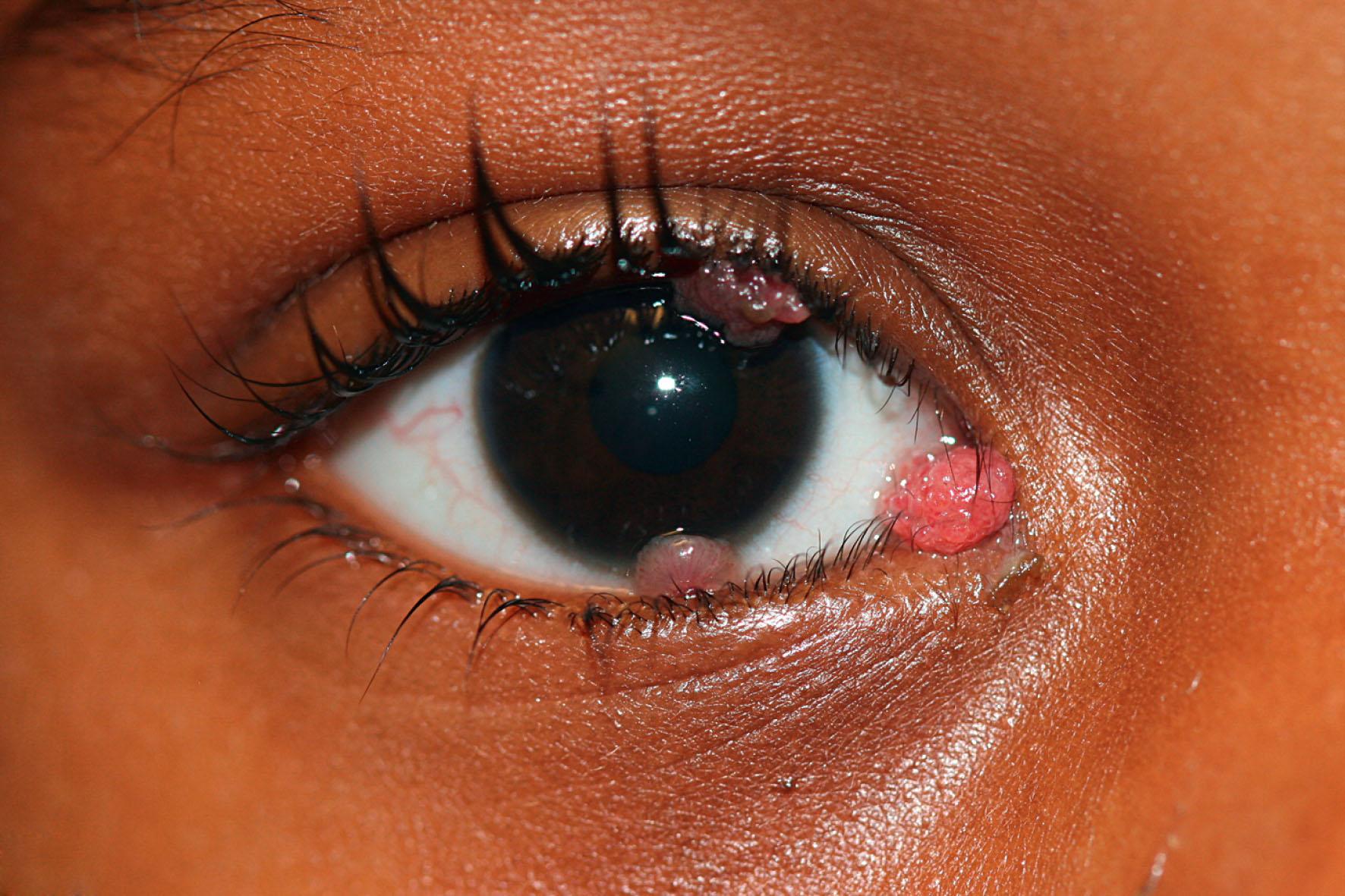
A conjunctival papilloma in an infant or young child could result from acquisition of HPV during a vaginal delivery. The mother should be notified of this and referred for evaluation and treatment if necessary. If dysplasia is noted histopathologically, then the term “premalignant” is often used. If no dysplasia is noted, then the papilloma is benign.
Become a Clinical Tree membership for Full access and enjoy Unlimited articles
If you are a member. Log in here